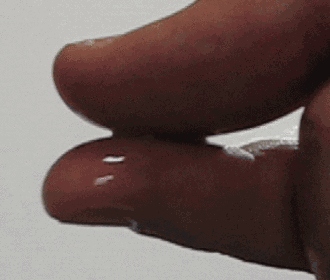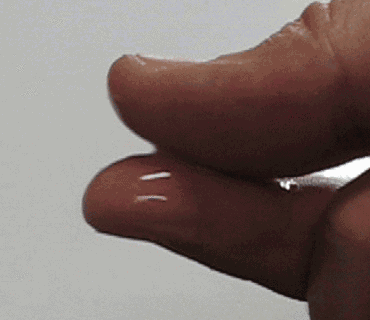Many old pieces of printing and typecasting equipment recommend (amongst other products) Mobil Vactra for lubricating some of the sliding surfaces. Locations like journal bearings (where a shaft rotates in a round smooth hole) retain their oil by surface tension. The oil doesn’t drain from the gap between the moving parts because to do so would increase its surface area too much.
Many other surfaces, though, have intermittent contact because a part either slides or rolls along another part that does not have the same shape or size. The immediate contact between the parts will retain oil by surface tension, and as long as the machine is operating the oil will be spread along the entire mating surfaces. Once the machine is stopped, however, the remaining surfaces not in direct contact are open and any oil present will just run off, given enough time, especially on vertical surfaces.
To limit this effect, special oils exist which contain a tackifier, making the oil somewhat sticky so that it remains on surfaces much longer. Mobil Vactra was such an oil, and so was recommended for sliding and rolling surfaces on a lot of printing equipment. It was also used on machine tools such as lathes and mills used in manufacturing. Tack is a distinct property from viscosity, and high tack is not a substitute for heavier oil.
However, in the late 1980’s Mobil started to remove (or perhaps change) the tackifier in their Vactra oil, with the result that it no longer effectively lubricated such parts. The earliest reference I can find to this is a message from user ‘icehd81’ on the Practical Machinist forum from December 8th, 2005. This user worked for the press manufacturer Goss and so seems like a relatively reliable source. His claim was that the oil was reformulated due to EPA requirements on the machining industry; I have seen others claim the tackifier was incompatible with the coolant/lubricant used for the cutting tools in the machinery. I suspect that the tackifier contaminated the machining fluid (which is mostly water), and when the machining fluid was disposed of, this contamination caused environmental problems (so both stories are the same).
In essence Mobil reformulated Vactra to suit a large chunk of their market (machining) without checking if the change would be a problem for another of their big markets (printing). Rather than admitting any mistake, they introduced a new product, Vacuoline, for the printing industry, and kept the reformulated Vactra.

Regular oil (not Vactra #2, however). Note how, when I pull my finger and thumb apart the oil quickly breaks into two round drops which then spread on my skin.

Same test with Vacuoline 1409. Note how the oil stretches to a fine thread rather than immediately breaking away.
The net result, though, is that old equipment for which Vactra was recommended should use a Vacuoline product instead. It seems that Vactra #2 (ISO 68 weight) was the most popular recommendation, and its replacement is Vacuoline 1409.
So if you have any equipment from before the 1980’s which recommends Vactra #2, and you need to buy more oil, you should look for Vacuoline 1409 instead. Some people have claimed that you can get the same effect by adding some STP Oil Treatment to the oil, but I haven’t tried this because I now have a lifetime supply (20L) of Vacuoline.

Leave a Reply